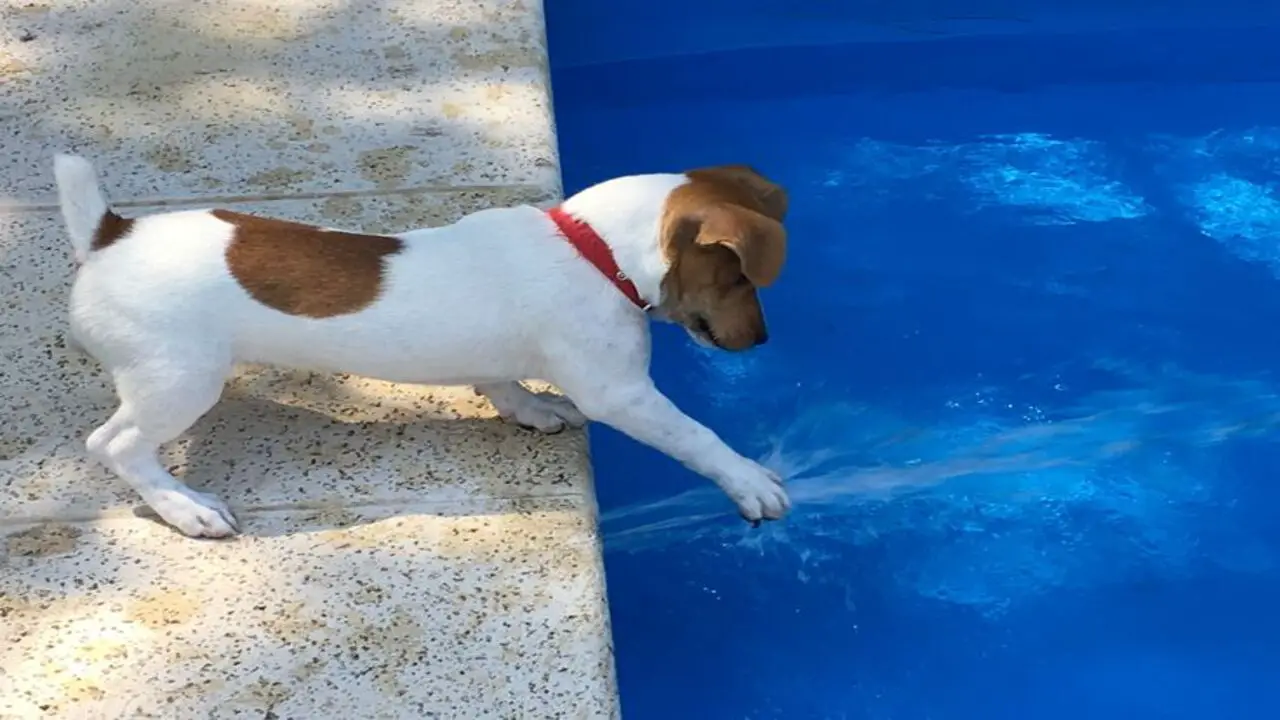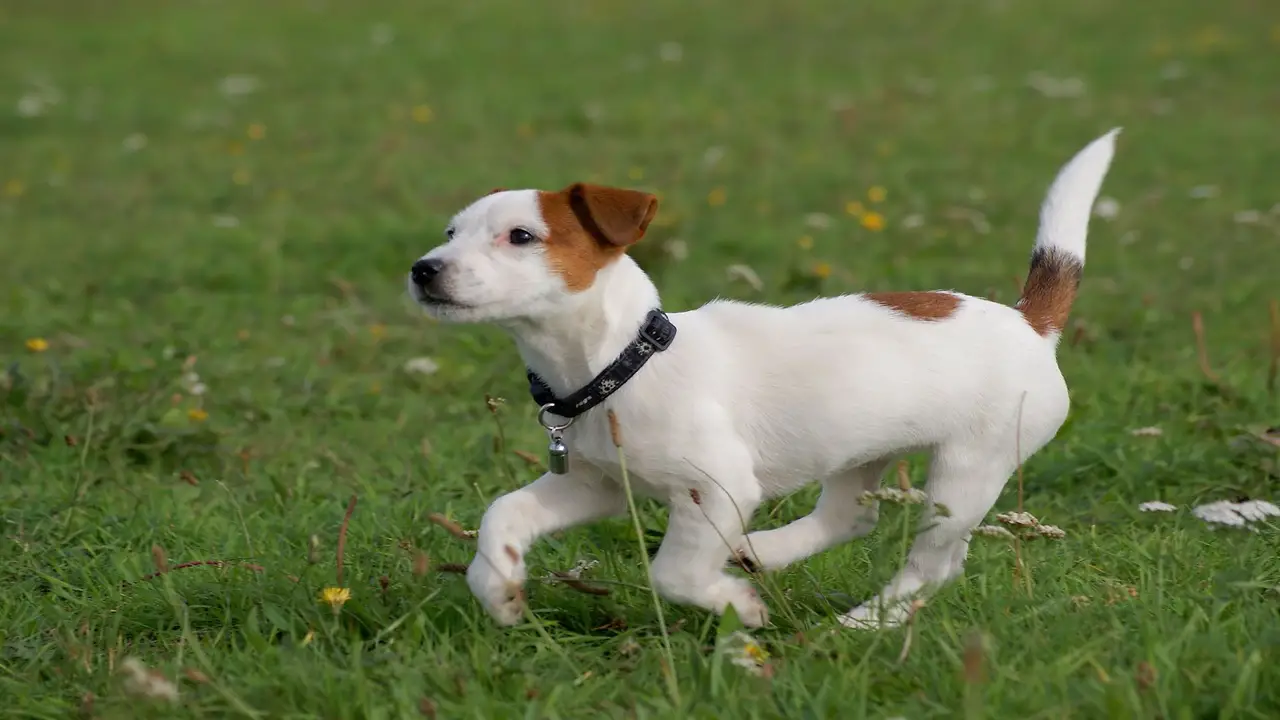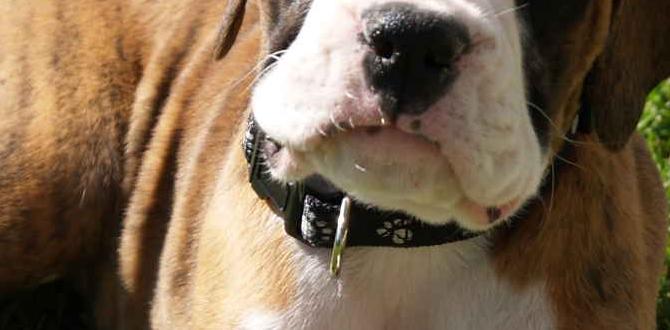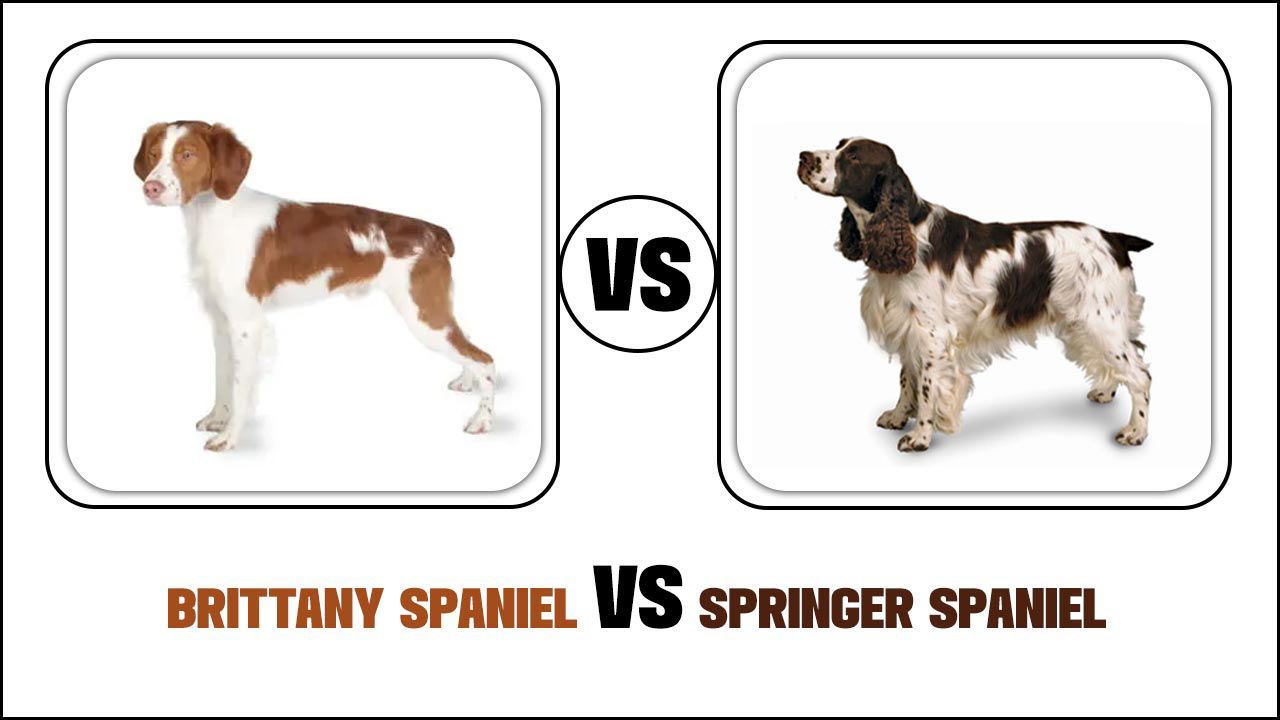Genetics determines the presence or absence of a natural tail in a Jack Russell Terrier. When two Jack Russell Terriers with tails are bred, it can result in offspring with tails.
The gene responsible for tail length is inherited from both parents, meaning that if one parent has a longer tail, there is a higher chance of the puppies having longer tails. Genetic testing can help determine the likelihood of offspring with tails, allowing breeders to make informed decisions about their breeding programs.
Here we will dive deeply into the world of jack russell terriers with Tail. We will discuss the genetics behind it and the pros and cons of tail cocking. By the end of this article, you’ll be an expert on all things related to Jack Russell Terriers with tails.

Jack Russell Terrier With Tail: The Pros And Cons Of Tail Cocking A Jack Russell Terrier

Tail docking, the practice of removing a dog’s Tail, has long been controversial. Regarding Jack Russell Terriers, some breeders choose to dock their tails for various reasons. However, there are pros and cons to consider before making this decision.
Pros of tail docking:
- – Tradition: Tail docking has been a longstanding tradition for certain breeds, including Jack Russell Terriers. Some breeders believe it helps maintain the breed’s appearance and preserves its working ability.
- – Injury prevention: Jack Russell Terriers know for their high energy levels and enthusiasm. A docked tail may reduce the risk of injury during activities such as hunting or agility training.
- – Hygiene: Without a tail, there is less chance of feces or dirt getting trapped in the fur around the tail area, making grooming and cleanliness easier.
Cons of tail docking:
- – Pain and distress: Tail docking typically perform when puppies are very young, often without anesthesia. This can cause pain and distress to the puppy.
- – Communication: Dogs use their tails to communicate with other dogs and humans. Docking their tails may hinder their ability to express themselves effectively.
- – Legal restrictions: In some countries and regions, tail docking is illegal or heavily regulated. It’s essential to know local laws before proceeding with this procedure.
Ultimately, the decision to dock a jack russell terrier with a tail should make after careful consideration of these factors and consultation with a veterinarian who can provide guidance based on individual circumstances.
Tail Docking In Jack Russells: Why And How?

Tail docking in Jack Russells is a controversial practice carried out by licensed veterinarians. Breeders may opt for tail docking for cosmetic reasons, but it remains a topic of debate. The procedure involves removing part of the Tail, commonly done in certain working dog breeds. Tail docking in Jack Russells is a practice that involves the removal of a portion of the Tail. There are several reasons why tail docking is done in this breed, including:
- – Tradition: Historically, Jack Russells were bred for hunting purposes, and tail docking was believed to prevent injuries while working in dense brush or underground.
- – Aesthetics: Some owners prefer the appearance of a docked tail on their Jack Russell, as it is seen as a breed standard and give them a more streamlined look.
- – Preventing injury: In some cases, Jack Russells may be prone to injuries such as broken tails or “happy tail syndrome,” where the Tail gets repeatedly injured from wagging against hard surfaces. Docking the Tail can help prevent these types of injuries.
It’s important to note that a licensed veterinarian should always perform tail docking using proper anesthesia and pain management techniques. Considering the ethical implications and potential impact on the dog’s well-being is crucial before tail docking.
What Does A Jack Russell’s Tail Communicate?

A Jack Russell’s Tail is an essential communication tool that reflects their emotions. It conveys various feelings like happiness, excitement, fear, and anxiety. A wagging tail signifies joy and enthusiasm, while a tucked tail indicates uneasiness and nervousness.
Understanding their tail language can help dog owners better interpret Jack Russell’s needs and emotions. IIt can also help identify any potential health issues or discomfort they may be experiencing. As with any communication tool, paying attentipayingage cues is essential to understand you is essential to understandings
Of The Jack Russell Terrier Tail
Jack Russell Terriers with tails have a unique physical characteristic that sets them apart. Their natural Tail enhances their overall appearance and balance, enhancing their distinctive charm. The Tail’s length and shape can vary among individuals, adding to the individuality of each dog. Significantly, having a tail does not affect the breed’s temperament or intelligence.
These Jack Russells are as lively, intelligent, and spirited as their tailless counterparts. As a responsible owner, appreciating and embracing the unique characteristics of a Jack Russell with a tail is essential. It showcases the natural beauty and diversity within the breed, highlighting their individuality and charm. By celebrating the Tail of a Jack Russell Terrier, we honor the breed’s rich history and preserve its distinct physical traits.
The Temperament Of The Jack Russell Terrier Tail
AA Jack Russell Terrier’s temperament is not affected by its tail length. These energetic, intelligent, and independent dogs maintain their spirited nature regardless of whether they have a docked tail or a natural one. While tail language is still an essential aspect of communication for them, it does not determine their overall personality.
JRT owners must provide proper training and socialization to ensure a well-behaved dog. Each Jack Russell Terrier has its unique personality, so understanding and catering to their needs and preferences is critical. Owners can build a strong bond with their JRT and create a harmonious living environment by focusing on their specific temperament and characteristics.
How To Train A Jack Russell Terrier Tail

Training a Jack Russell Terrier with a tail requires consistency, patience, and positive reinforcement. Here are some tips to help you train your furry friend. By following these tips and investing time in training, you can have a well-behaved Jack Russell Terrier with a tail that brings joy to your life.
- – Begin training early. Start training your Jack Russell Terrier as soon as you bring them home. This will help establish good habits and prevent any unwanted behaviors from developing.
- – Use positive reinforcement. Reward your dog with treats, praise, and affection when they exhibit the desired behavior. This will motivate them to continue behaving well.
- – Be consistent. Consistency is vital when training any dog. Use the same commands and cues every time and stick to a regular training schedule.
- – Socialize your dog. Expose your Jack Russell Terrier to different people, animals, and environments from an early age. This will help them become well-rounded and confident dogs.
- – Seek professional help if needed. If you’re struggling with training or if your dog is displaying challenging behaviors, consider enrolling in obedience classes or consulting with a professional dog trainer for guidance.
How To Care For Jack Russell Terrier Tail
Taking care of a Jack Russell Terrier’s Tail is essential to their overall grooming and hygiene. Here are some tips to help you care for your Jack Russell Terrier’s Tail. By following these tips, you can help ensure that your Jack Russell Terrier’s Tail remains clean, healthy, and happy.
- – Regularly check the Tail for any signs of injury or infection, such as redness, swelling, or discharge. If you notice any abnormalities, consult with a veterinarian.
- – Keep the Tail clean by gently washing it with warm water and mild dog shampoo when necessary. Be sure to dry the Tail afterward to prevent moisture buildup thoroughly.
- – Trim the hair around the base of the Tail to prevent matting and tangling. Use scissors or clippers specifically designed for pet grooming, and be cautious not to cut too close to the skin.
- – Regularly brush the Tail to remove any loose hair and prevent tangles. Use a soft-bristled brush or a grooming tool for dogs with short coats.
- – Pay attention to your Jack Russell Terrier’s behavior regarding their Tail. It could be a sign of injury or discomfort if they seem sensitive or show signs of pain when their tail touch.
Are There Any Health Issues Associated With A Docked Tail?
Docking a Jack Russell’s Tail can have potential health issues. Dogs may experience chronic discomfort or pain due to the procedure. Docked tails are also more susceptible to infections and injuries. It is crucial to provide proper care and monitor their well-being closely. Consulting a vet is advisable for any health concerns.
Is Docking A Jack Russell’s Tail Ethical?

The ethics of tail docking in Jack Russell Terriers are a subject of much debate. Some argue it causes unnecessary pain, while others believe it is necessary for breed standards and working dogs. Potential long-term health issues also raise ethical concerns. Individuals must research and make informed decisions.
Conclusion
whether or not to dock a jack russell terrier with a tail is a personal choice, but it’s essential to consider the pros and cons. While tail docking is commonly done for aesthetic reasons, it’s crucial to prioritize the well-being and comfort of the dog. Tails are essential in communication and can provide valuable insights into a dog’s emotions.
Additionally, it’s essential to understand the genetics behind Jack Russell Terriers with tails and the potential health issues associated with docking. Patience, consistency, and positive reinforcement are essential when training and caring for a Jack Russell Terrier with a tail. Ultimately, make an informed decision that aligns with your values and promotes the overall welfare of your four-legged companion.
Frequently Asked Questions
1.Can A Docked Tail Affect Jack Russell’s Balance?
Ans: A docked tail can impact Jack Russell’s balance and coordination. Docking is now banned in many countries due to animal welfare concerns. A natural tail helps dogs communicate through body language. If you adopt a Jack Russell with a docked tail, be mindful of their balance during physical activities.
2.Do Jack Russell Terriers Get Their Tails Docked?
Ans: Historically, Jack Russell Terriers had their tails docked for working purposes. However, in many countries today, tail docking is illegal and inhumane. Some breeders still dock the tails of Jack Russell Terriers for appearance reasons.
3.How Long Are Jack Russell Terrier’s Tails?
Ans: Jack Russell Terrier tails typically range from 4 to 5 inches. However, it’s important to note that tail length can vary due to genetics or tail docking. It’s crucial to research ethical breeding practices when considering a Jack Russell Terrier with a tail.
4.How Is A Jack Russell With A Natural Long Tail?
Ans: Jack Russell Terriers can have a natural long tail due to genetic variations, although it’s not a breed standard. This variation is becoming more accepted in some countries. The temperament and characteristics of a Jack Russell with a naturally long tail are the same as those of a docked-tailed Jack Russell.
5.Is A Tail Necessary For A Jack Russell Terrier?
Ans: Some Jack Russell Terriers are born without tails, while others have their tails docked for various reasons. However, a tail is not necessary for a Jack Russell Terrier. Tail docking is a controversial practice that does not affect the health or temperament of the breed.
Meet Elyse Colburn, the devoted canine companion and storyteller behind the enchanting world of “Tales, Tails, and Adventures Unleashed.” A passionate dog enthusiast with a heart full of paw prints, Elyse Colburn shares heartwarming tales and insightful adventures, celebrating the joy, loyalty, and endless antics that make every dog a true hero. Join Elyse Colburn on this tail-wagging journey, where every post is a love letter to our four-legged friends.






